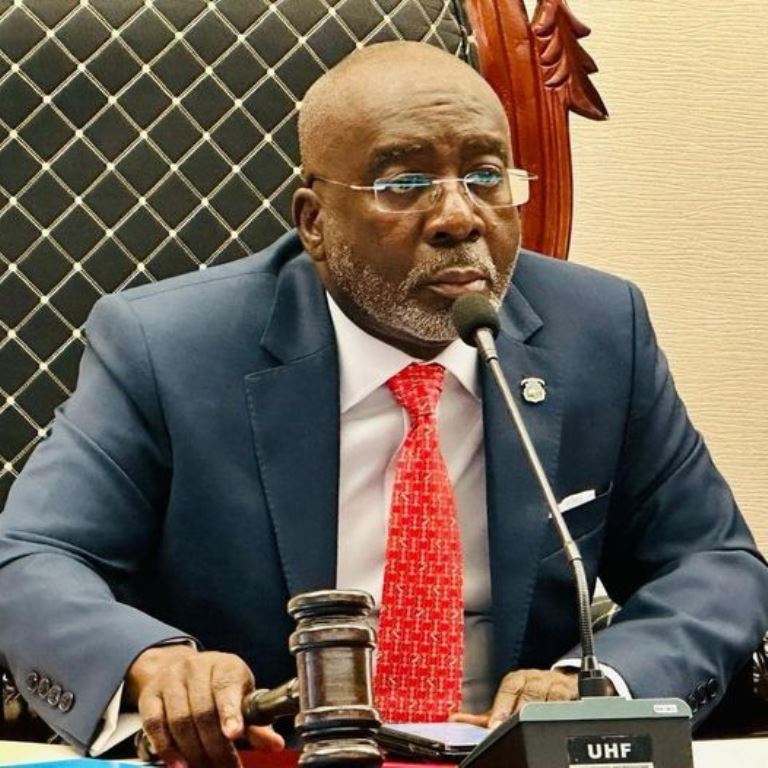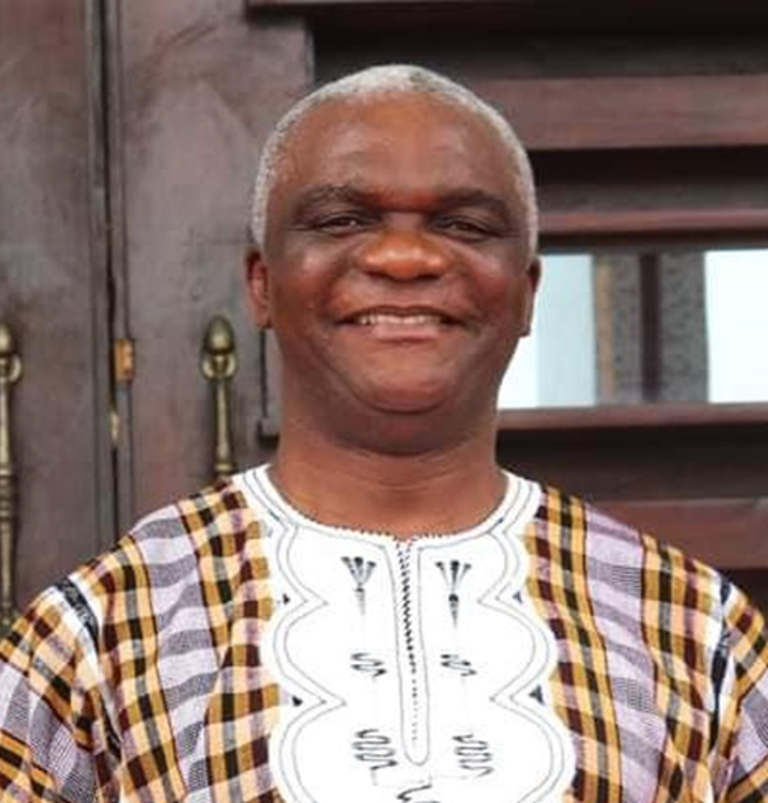By Daniel Henry Smith, PhD
Marriage, a revered institution, has stood the test of time as a cornerstone of society. Rooted in religious and spiritual traditions, it transcends cultural boundaries, serving as a sacred covenant between a man and a woman.
This essay aims to defend marriage as a holy sacrament authorized by God, highlighting its essential role in the creation of families, nations, and societies at large. Through theological, historical, and sociological lenses, we will explore why marriage should be upheld as a foundational institution. Theological Foundation of Marriage: At the heart of the defense of marriage as a holy sacrament is its theological significance.
In many religious traditions, marriage is viewed as a divine ordinance established by God. The Judeo-Christian conception of marriage finds its genesis in the Book of Genesis, where God created man and woman and declared, “Therefore shall a man leave his father and mother and be joined to his wife, and they shall become one flesh” (Genesis 2:24, NKJV).
This sacred union is not merely a social contract but a covenant infused with divine purpose and significance. The sanctity of marriage is further emphasized in religious doctrines that regard it as a reflection of God’s relationship with humanity. In Christianity, for instance, Christ’s love for the Church is often likened to the marital relationship, underscoring the idea of mutual commitment, selflessness, and love.
This spiritual dimension imbues marriage with a profound meaning that extends beyond romantic attraction, positioning it as a sacred task ordained by God to be fulfilled by individuals.
The Role of Marriage in Family Formation: Marriage serves as the primary institution through which families are formed, playing a critical role in the nurturing and development of children. The family unit, rooted in a marital bond, offers a stable environment where children can grow, learn values, and receive emotional support. Research has consistently shown that children raised in intact families tend to experience better educational, social, and psychological outcomes compared to those raised in non-traditional family structures.
From a sociological perspective, marriage provides a framework for roles and responsibilities that contribute to a child’s sense of security and identity. Parents, through their commitment to one another, model healthy relationships and instill values of love, respect, and cooperation in their children. Therefore, defending marriage as a holy sacrament inherently means advocating for the well-being of future generations, as a stable marital relationship fosters a nurturing environment conducive to proper development. Marriage as a Foundation for Society and Nation:

Beyond the family unit, marriage is instrumental in forming the backbone of a healthy society and nation. A society built on strong marriages and families tends to exhibit lower rates of crime, poverty, and social unrest. Stability in marriage contributes to social cohesion, where individuals are more likely to engage in community-building activities, volunteerism, and civic duties.
Historically, nations that uphold the sanctity of marriage as a holy institution have demonstrated resilience and prosperity. The familial bonds created through marriage contribute to the continuity of culture, traditions, and shared values, fostering a sense of belonging and collective identity among citizens. By promoting marriage as a sacred union, societies can cultivate a culture of responsibility and commitment that ultimately leads to stronger national foundations. Critics of Traditional Heterosexual Marriage: Critics of traditional heterosexual marriage have argued that love and commitment are not exclusive to heterosexual couples and that same-sex marriages should also be recognized as valid.
They contend that denying marriage rights to same-sex couples is a form of discrimination that undermines the principles of equality and justice. Other critics assert that the traditional definition of marriage is no longer relevant in contemporary society, where diverse family structures (such as single-parent homes, cohabiting couples, and blended families) are increasingly common and functional. In this regard, many people are advocating for a secular view of marriage, emphasizing that its value lies in legal and social recognition rather than religious significance. They argue that the state should not privilege any particular religious interpretation of marriage. Some even go further to argue that individuals should have the freedom to define their own relationships and family structures without adhering to traditional norms. They emphasize the importance of personal choice in determining the nature of intimate relationships.
Some of these critics focus on the historical context of marriage, pointing out that it has often been a patriarchal institution that subordinated women and marginalized non-heterosexual relationships. They contend that the sacramental view of marriage does not account for these injustices. They highlight the prevalence of divorce and infidelity as evidence that marriage, even when viewed as sacred, often fails to uphold its intended values.
They argue that the institution needs reevaluation based on these realities. Cultural Relativists argue that the concept of marriage varies significantly across cultures and religious traditions, suggesting that a single definition, especially one rooted in a specific religious context, cannot adequately encompass the diversity of human relationships. Changes in societal values regarding gender roles, parenting, and partnerships could be presented as evidence that marriage should adapt to reflect contemporary understandings rather than adhere to traditional frameworks.
While the critics point to shifting behaviors and cultural diversities as some reasons for marriage to be recognized on the basis of individual choice, traditional marriage has a long-standing historical foundation that spans multiple cultures and religions. It is often seen as a universal institution that has provided societal stability for generations, reinforcing the idea of marriage as a time-honored covenant. Furthermore, the biological differences between men and women create a natural complementarity in marriage.
This difference is viewed as essential for creating and nurturing offspring, with traditional marriage being the ideal environment for raising children. Research consistently indicates that children thrive in stable, married households. Traditional marriage provides a framework that encourages commitment and cooperation between parents, which is crucial for the emotional, mental, and social well-being of children. Traditional marriage is often seen as a moral and ethical standard that promotes fidelity, responsibility, and accountability. It establishes clear expectations for behavior between partners, fostering a culture of respect and commitment.
Traditional marriage also contributes to social cohesion by creating bonds that extend beyond the couple to their families and communities. Strong marriages can enhance social networks and provide support systems, ultimately benefiting society as a whole. Traditional marriage can also be a source of support for religious and spiritual growth. In this context, marriage cannot only be seen as a legal contract but also a spiritual covenant with God. Upholding the sanctity of traditional marriage is seen as a way to honor religious beliefs and practices that view marriage as sacred.
Traditional marriage is viewed as a means of preserving cultural identity and continuity. It is a foundation of traditional family structures where essential values, customs, and tradition are passed down to future generations. Traditional marriage is also associated with personal growth, as partners work together to support each other’s goals, develop communication skills, and navigate challenges. This partnership can lead to profound personal and relational growth. Below are several historical and current examples of traditional marriage practices across different cultures and time periods, which illustrate the longstanding significance of marriage as a social institution:
- Ancient Rome: In ancient Rome, marriage was a formal, legal union that established rights and duties between spouses. The ceremony, known as “confarreatio,” was often held in the presence of witnesses and involved a sacred offering to the gods. Roman marriage emphasized the importance of family lineage and the continuity of household.
- Biblical Traditions: In biblical times, marriage was seen as a covenant established by God. The Old Testament includes many examples of prominent figures who had traditional marriages, such as Abraham and Sarah or Isaac and Rebekah. These unions often emphasized the roles of husbands and wives, with a focus on loyalty, fidelity, and family lineage.
- Medieval Europe: Marriage in medieval Europe was often a strategic alliance between families, serving to secure land, wealth, and political power. Church-sanctioned marriages were considered sacraments, reflecting the belief that God ordained the union. Couples typically exchanged vows in a church, signifying their commitment before God and the community.
- Feudal Japan: In feudal Japan, traditional marriage (known as “muko-iri” or “yome-iri”) served as an important social contract. Marriages were typically arranged to strengthen family ties and preserve social status. The roles of husbands and wives were well-defined, with men’s responsibilities centered on providing for the family and women’s roles focused on homemaking and child-rearing.
- Native American Tribes: Many Native American tribes had distinct marriage customs that emphasized tribal affiliations, social status, and community bonds. For example, in some tribes, marriage was seen as a way to build alliances between families, and ceremonies often included rituals to honor the earth and ancestors.
- Victorian England: The Victorian era placed significant emphasis on traditional marriage as a moral institution. The ideal of a devoted husband and wife became entrenched, with distinct gender roles emphasizing the husband as the provider and the wife as the homemaker and nurturer. Marriages were often arranged based on social class and economic standing.
- Colonial America: In colonial America, marriage was viewed as a partnership essential for survival and community building. It was common for marriages to be formed for economic stability and social cohesion. Women were often responsible for domestic duties, while men oversaw agricultural and economic pursuits.
- Hindu Customs: In Hindu culture, marriage (known as “vivaha”) is a sacred rite regarded as a lifelong commitment. Traditional Hindu marriages often involve elaborate ceremonies, including rituals such as “saat phere” (taking seven steps together) that symbolize the couple’s commitment to one another and their families.
- Islamic Tradition: In Islamic culture, marriage is considered a sacred contract (nikah) and is encouraged as a means of fostering companionship and family life. Traditional Islamic marriages often involve negotiations between families, the offering of a dowry, and a public ceremony that marks the couple’s commitment.
- Renaissance Europe: During the Renaissance, marriage was often a means of securing alliances among noble families. Marriage contracts were common, specifying the terms of the union, such as dowries and inheritance rights. Love marriages began to gain acceptance, but traditional marriage remained a key element of social and economic stability.
- African traditions: In Africa, marriage is regarded as a sacred contract that committed two individuals to each other as well as their both families. Traditional marriages in Africa involve negotiations between two families and the community in general. The ceremony involves the payment of dowry and public ceremony marking the commitment of the couple. These historical examples highlight the various ways that traditional marriage has been understood and practiced across cultures and eras. The enduring nature of marriage as a vital institution reflects its significance in fostering family, community, and social stability throughout human history. Conclusion The defense of marriage as a holy sacrament between a man and a woman stands on firm theological, sociological, and historical ground. Recognized as a divine institution, marriage serves as the bedrock for family formation, fostering environments where children can thrive and develop into responsible citizens. Furthermore, strong marital bonds contribute to the stability and cohesion of society, playing a vital role in the prosperity of nations. In an era marked by rapidly changing social norms, it is crucial to reaffirm the sanctity of marriage and recognize its timeless significance. Upholding marriage as a sacred covenant not only honors its divine origins but also promotes the well-being of future generations, enriches community life, and strengthens the fabric of society. By fostering appreciation and respect for marriage as a holy sacrament, we ensure that this vital institution continues to inspire love, commitment, and unity for generations to come.






